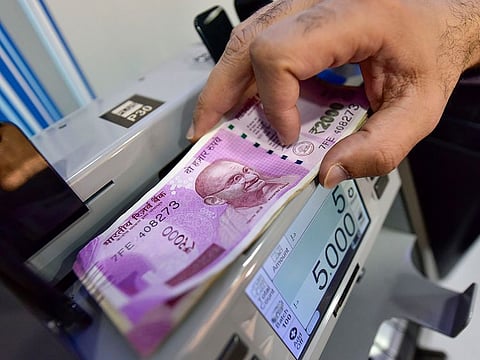Indian rupee steady at 21.68/Dh - should remitters wait after US Fed rate hike on September 22?
Rupee benefits from dollar drop and lower oil and gold prices, but will it last?

Dubai: The Indian rupee has started the week on firm footing, at 21.67-21.69 to a dirham, even with the dollar still relatively on the higher side. In fact, right through the last week, the rupee had been spared of the turmoil that had seen the euro and the pound sterling plunge against the dollar.
“India is spending less on oil imports because crude prices have been dropping – by 10 per cent in the last months - and a second reason is that foreign fund inflows into Indian markets remain consistently on the higher side,” said Krishnan Ramachandarn, CEO of Barjeel Geojit Securities in Sharjah. “There could be a third reason for the rupee’s relative stability, and that’s because while gold imports will grow, the price of gold is still on the lower side (compared to a year ago).” (Oil and gold imports eat up a significant portion of India’s dollar reserves, and these play into how well or otherwise the rupee will do.)
On Monday, India's main stock market index, the BSE Sensex, is up up by more than 400 points as at 10.15 UAE time.
Should remitters wait?
In another 10 days, the US Federal Reserve will have announced the next rate hike, most likely to be a third successive hike by 0.75 per cent. When that happens, the dollar’s likely to make another push higher. (The ‘Dollar Index’, which track’s its strength or weakness against a basket of other currencies, is now at 108.71, slightly off from the 109 plus it had been at. In that phase, the euro slipped below parity, and more recently, the pound also wilted against dollar power.)
As for the rupee, “The USD/INR at 79.67 levels appears to have consolidated and expected to be range-bound in the near term at 79.60-79.80 levels,” said Ramachandran. “Only the Fed rate hike accompanied by a stronger Dollar Index beyond 110 can test the USD/INR to 80 levels by end September.”
Dollar’s roll
The Dollar Index is up by 14 per cent on a year-to-date basis. “This is primarily because of the weakening of the euro and pound, which are down by 12- and 14 per cent this year,” said Vijay Valecha, Chief Investment Officer at Century Financial.
“The US Fed jumping early onto the rate hike narrative meant weakening a these currencies and other emerging markets too bore the brunt. Inflation further remaining sticky in the US could imply the dollar holding its gains again from here on.”
Factor in energy prices
The UK and eurozone have also had to factor in high energy prices. “The ECB, which was late jumping on the rate hike bandwagon, is expected to sound more hawkish with inflation in eurozone touching new records. The latest numbers from the UK show the economy contracted by 0.1 per cent in Q2-22.
“With the BoE themselves forecasting a base case recession scenario towards the end of the year, all eyes will be on the Q3-22 GDP. Technically, both currencies are trading in uncharted territories. “While the euro is trading at two decades low against the dollar, the pound has dropped to its lowest since 1985. Both the currencies lack any technical support as far as charts are concerned.”
Sign up for the Daily Briefing
Get the latest news and updates straight to your inbox


